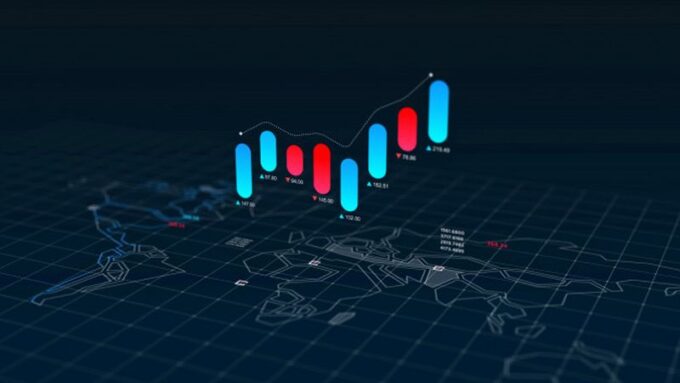One of the most essential skills you’ll need to master as you learn how to trade stocks is how to interpret the massive amounts of data that are available to you about the price fluctuations of your chosen stocks and companies. In essence, making predictions about the rise and fall of stock prices requires you to analyze the historical patterns of the market; how the stock reacts to news, high and low trading points throughout the day and broader trends of price increases or decreases over the last few weeks or months.
These data are available to you in a variety of different formats and it’s important to become familiar with each type of stock chart studies so that you have as much information informing your decisions as possible. One of the most common ways to show the day trends of a stock is through a candlestick stock chart, so learning how to read a candlestick chart will help you garner more information.
What a Candlestick Stock Chart Shows
The overall goal of any candlestick stock chart is to show the short term price variations in a stock. Taken over the course of a few days, you’ll be able to quickly identify if the overall price is trending up or down, and how volatile the price has been. One of the key trading ideas that you’ll need to master is to find relatively passive stocks with a gentle upwards trend which will represent a fairly safe bet, and using candlestick charts allow you to see these patterns at a glance.

A candlestick chart has three main sections:
- Real body – this is the thickest part that looks like the main part of a candle. It’s the middle section of a candlestick chart and represents the price range between the opening price and the closing price of the stock. You can get candlesticks that take after-hours trading into account, but you’ll find the regular day trading charts to be more accurate. A long real body in a candlestick stock chart shows a great variation in price between opening and closing, while a short real body section shows a relatively low volatility.
- Top wick – above the real body is the top wick, or shadow. As you’ll find out quickly as you learn trading, most stocks don’t have a gentle rise or fall from opening bell to closing time. Instead they have peaks and lows throughout the day that can be caused by news cycles, time of day (there tends to be a lot of activity right after the morning bell and just before the market closes) and in reaction to big shifts in the market. The top wick, or shadow, represents the high water mark for the stock. A big gap between the real body and the top wick shows a dramatic change in price throughout the day, and requires some investigation about what happened to cause such a big shift.
- Bottom wick – below the real body is the bottom wick, or shadow. In the same way that the top wick shows the maximum price that the stock achieved throughout the day, the bottom shadow shows the minimum price of the stock. As a beginner trader, you’ll want to find stocks with a smaller bottom wick so that you know that even if you make a loss, your margins will be small.
Once you know what the three parts of a candlestick chart represent, you can see how you’ll instantly be able to put multiple days’ worth of data together next to each and examine patterns in the size of the real body and the distance of the top and bottom wick from the real body.
Reading the Colors
When you look at a candlestick stock chart, you’ll notice that there are some different colors in the real body. While these can look random, there’s actually significance to the colors used, and while there’s no one industry standard, there’s only two variations that you’ll see: black and white, or red and green.
The reason for the dual color pattern is to represent to traders whether a stock closed at a higher or lower price than when the stock market opened (if you think about it, without a color, there would be no way of knowing which “up” a candlestick chart is!).
A black or red real body shows that the stock closed lower, so the top of the real body is the opening price and the bottom is the closing price, while a white or green real body shows that the stock closed higher. However, the wick will always be marked by a black line as the top and bottom wick always represent the highest and lowest price respectively.
Basic Candlestick Patterns
Once you know what the parts and colors of a candlestick stock chart represent, you can begin to look for patterns over time. Some common examples include:

- Short real followed by long real – this is known as a engulfing pattern and can be interpreted to mean that sellers of a stock outnumber the buyers if the short candlesticks are green (or white) and that the price is likely to fall (the opposite is true if the short real bodies are red or black)
- Opening below a small real body – this is known as an evening star pattern and the small real body can be green or red. It typically represents that the sellers are back in control and more selling is on the cards.
- Small real body inside the previous day’s long real body – this is known as a harami pattern and is one to watch out for as it can be an indicator of a reversal in price (either up or down depending on the color of the candlestick)/
These represent just some of the different configurations of candlestick patterns that you’ll find. But not every trader needs to know how to read candlestick charts. Many professional traders actually don’t rely on candlestick charts at all, instead they rely on just the open and closing price of a stock each day. To learn these methods, StockOdds online courses which will teach you these methods and how to trade like a professional.










